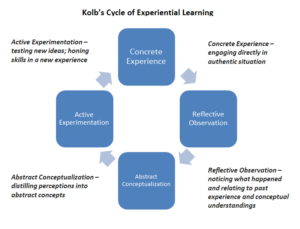I was given the assignment of doing a peer review for “Teaching Technology Addiction in a Highschool Classroom” by Sinead Swan, Colton Van Camp, and Harleen Parmar. First off, I really appreciated the choice of subject for this interactive resource. Technology addiction is a very relevant and topical choice for crafting a lesson around in this current time. From a designer perspective, this interactive resource plan is organized and incredibly clear in its delivery. I appreciated that every part was labeled and easy to access as I was scrolling through.
From my understanding, there was to be a part in the learning resource about technology rationale, where the authors would explain the technologies they would use and rationalize those decisions, and I could not find that in this resource. Although technology was something that was discussed within the resource, so perhaps it was just not explicitly labeled. Either way, I would make that portion more clear as I do believe it was in the given criteria.
I found it interesting that one of the activities involved going in and looking at things like app usage and screentime, if only because I worry some students would be self-conscious about their own equipment. It’s easy to find screen time statistics for someone with the newest few iPhones, but for those with older or more obscure phone brands I feel as though that could unintentionally cause some discomfort or feelings of inferiority amongst students as comparison is bound to happen – especially amongst high school-aged teenagers. Socioeconomic disparities are something that do unfortunately occur in classroom settings. So perhaps making that particular activity optional, or just having an open dialogue that students do not necessarily have to evaluate their own screentime to understand the point so that certain students do not feel pressured to share or be embarrassed by comparing their phones to others would be of value there.
It makes a lot of sense given the content that is being teached to be grading mostly on solid reflection, understanding of materials, and completion. One thing I was a little confused about is the part that said 10 marks would be given to creativity. At first, I assumed that it referred to a neat and orderly journal but then in the following explanation I saw that that was a separate section. Speaking from my own personal experience, I am not an inherently visually creative person, so it can be frustrating when parts of my grade is dependent on something that comes easily to others but I am just inherently not good at. I would suggest clarifying more in the explanation exactly what you mean by creativity and making it unique to who they are and their lifestyle in terms of how that’d actually be expressed in this journal format; because I just found myself wondering what the grader was actually expecting from that section, so if I was wondering and having these questions then I’m sure hypothetical students might be as well.
All things considered, I definitely think this was a really interesting topic and it was very well expressed. I can tell that a lot of thought and effort went into this, and I’m very glad I got to read! Hopefully these comments can be of some help as you all move forward!



Recent Comments